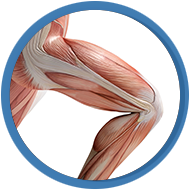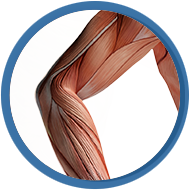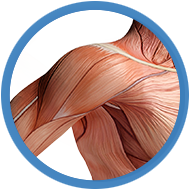Knee
Normal Anatomy of the Knee Joint
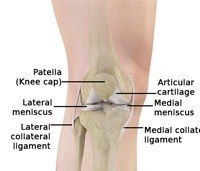
The knee is a complex joint made up of different structures including bones, tendons, ligaments and muscles. They all work together to maintain normal function and provide stability to the knee during movement.
Having a well-functioning healthy knee is essential for our mobility and ability to participate in various activities. Understanding the anatomy of the knee enhances your ability to discuss and choose the right treatment procedure for knee problems with your doctor.
Read moreKnee Fracture

A fracture is a condition in which there is break in the continuity of the bone. In younger individuals these fractures are caused from high energy injuries, as from a motor vehicle accident. In older people the most common cause is weak and fragile bone.
Read moreMeniscus Tear
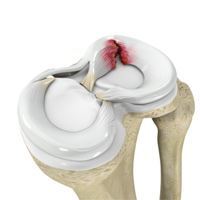
Meniscus tear is the commonest knee injury in athletes, especially those involved in contact sports. A suddenly bend or twist in your knee cause the meniscus to tear. This is a traumatic meniscus tear. Elderly people are more prone to degenerative meniscal tears as the cartilage wears out and weakens with age. The two wedge-shape cartilage pieces present between the thighbone and the shinbone are called meniscus. They stabilize the knee joint and act as “shock absorbers”.
Read morePatellofemoral Instability
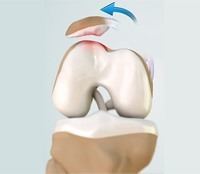
The knee can be divided into three compartments: patellofemoral, medial and lateral compartment. The patellofemoral compartment is the compartment in the front of the knee between the knee cap and thigh bone. The medial compartment is the area on the inside portion of the knee, and the lateral compartment is the area on the outside portion of the knee joint. Patellofemoral instability means that the patella (kneecap) moves out of its normal pattern of alignment.
Read moreArthroscopy of the Knee Joint
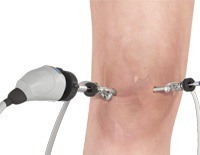
Knee Arthroscopy is a common surgical procedure performed using an arthroscope, a viewing instrument, to look into the knee joint to diagnose or treat a knee problem. It is a relatively safe procedure and a majority of the patient’s discharge from the hospital on the same day of surgery.
Read moreTotal Knee Replacement (TKR)

Total knee replacement, also called total knee arthroplasty, is a surgical procedure in which the worn out or damaged surfaces of the knee joint are removed and replaced with artificial parts. The knee is made up of the femur (thigh bone), the tibia (shin bone), and patella (kneecap). The meniscus, the soft cartilage between the femur and tibia, serves as a cushion and helps absorb shock during motion.
Read moreAnterior Cruciate Ligament ACL Reconstruction
The anterior cruciate ligament is one of the major stabilizing ligaments in the knee. It is a strong rope like structure located in the center of the knee running from the femur to the tibia. When this ligament tears unfortunately, it does not heal and often leads to the feeling of instability in the knee.
Read moreACL Reconstruction Hamstring Tendon
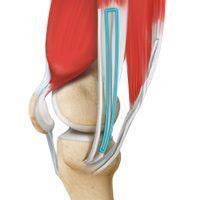
Anterior cruciate ligament (ACL) reconstruction hamstring method is a surgical procedure that replaces the injured ACL with a hamstring tendon. Anterior cruciate ligament is one of the four major ligaments of the knee that connects the femur (thigh bone) to the tibia (shin bone) and helps stabilize your knee joint. Anterior cruciate ligament prevents excessive forward movement of the lower leg bone (the tibia) in relation to the thigh bone (the femur) as well as limits rotational movements of the knee.
Read moreACL Reconstruction Patellar Tendon
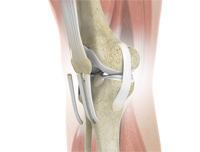
Anterior cruciate ligament (ACL) reconstruction patellar tendon is a surgical procedure that replaces the injured ACL with a patellar tendon. Anterior cruciate ligament is one of the four major ligaments of the knee that connects the femur (thigh bone) to the tibia (shin bone) and helps stabilize the knee joint. Anterior cruciate ligament prevents excessive forward movement of the lower leg bone (tibia) in relation to the thigh bone (femur) as well as limits rotational movements of the knee.
Read morePosterior Cruciate Ligament Reconstruction
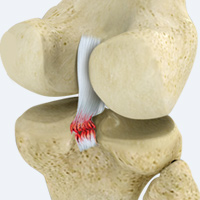
Posterior cruciate ligament (PCL), one of four major ligaments of the knee, is situated at the back of the knee. It connects the thighbone (femur) to the shinbone (tibia). The PCL limits the backward movement of the shinbone.
PCL injuries are very rare and difficult to detect when compared to other knee ligament injuries.
Read moreUni condylar Knee Replacement
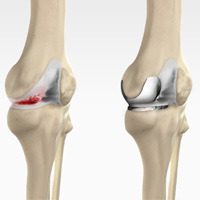
Unicompartmental knee replacement is a minimally invasive surgery in which only the damaged compartment of the knee is replaced with an implant. It is also called a partial knee replacement. The knee can be divided into three compartments: patellofemoral, the compartment in front of the knee between the knee cap and thigh bone, medial compartment, on the inside portion of the knee, and lateral compartment which is the area on the outside portion of the knee joint.
Read moreArthroscopic Meniscus Repair
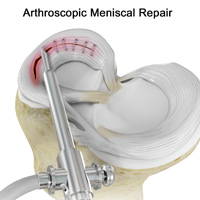
Meniscus tear is the commonest knee injury in athletes, especially those involved in contact sports. A suddenly bend or twist in your knee cause the meniscus to tear. This is a traumatic meniscus tear. Elderly people are more prone to degenerative meniscal tears as the cartilage wears out and weakens with age. The two wedge-shape cartilage pieces present between the thighbone and the shinbone are called meniscus. They stabilize the knee joint and act as “shock absorbers”.
Read moreRevision Knee Replacement
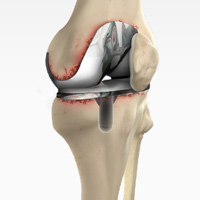
Revision knee replacement surgery involves replacing part or all of your previous knee prosthesis with a new prosthesis. Although total knee replacement surgery is successful, sometimes the procedure can fail due to various reasons and require a second revision surgery.
Read moreACL Tear
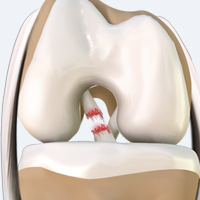
The anterior cruciate ligament, or ACL, is one of the major ligaments of the knee that is located in the middle of the knee and runs from the femur (thigh bone) to the tibia (shin bone). It prevents the tibia from sliding out in front of the femur. Together with posterior cruciate ligament (PCL) it provides rotational stability to the knee.
Read moreKnee Ligament Injury
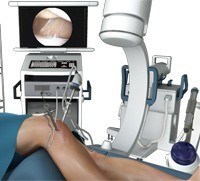
The knee is a complex joint which consists of bone, cartilage, ligaments and tendons that make joint movements easy and at the same time more susceptible to various kinds of injuries. Knee problems may arise if any of these structures get injured by overuse or suddenly during sports activities. Pain, swelling, and stiffness are the common symptoms of any damage or injury to the knee.
Read more
Click on the topics below to find out more from the Orthopedic connection website of American Academy of Orthopedic Surgeons.
- ACL Injury: Should it be fixed?
- Activities After a Knee Replacement
- Additional Resources on the Knee
- Adolescent Anterior Knee Pain
- Arthritis of the Knee
- Care of the Aging Knee: Baby Boomers May Need Lifestyle Changes
- Cemented and Cementless Knee Replacement
- Deep Vein Thrombosis
- Frequently Asked Questions about Osteoarthritis of the Knee
- Goosefoot (Pes Anserine) Bursitis of the Knee
- Knee Arthroscopy
- Knee Arthroscopy Exercise Guide
- Knee Implants
- Knee Replacement Exercise Guide
- Kneecap (Prepatellar) Bursitis
- Meniscal Tear
- Meniscal Transplants
- Minimally Invasive Total Knee Replacement
- Nonsurgical Treatment Options for Osteoarthritis of the Knee
- Orthopaedists Research Female Knee Problems
- Osgood-Schlatter Disease (Knee Pain)
- Osteonecrosis of the Knee
- Posterior Cruciate Ligament (PCL) Tear
- Rotating Platform/Mobile-bearing Knees
- Runner’s Knee (Patellofemoral Pain)
- Surgical Treatment of Osteoarthritis of the Knee
- The Knee
- Total Knee Replacement
- Unstable Kneecap
- Viscosupplementation Treatment for Arthritis
